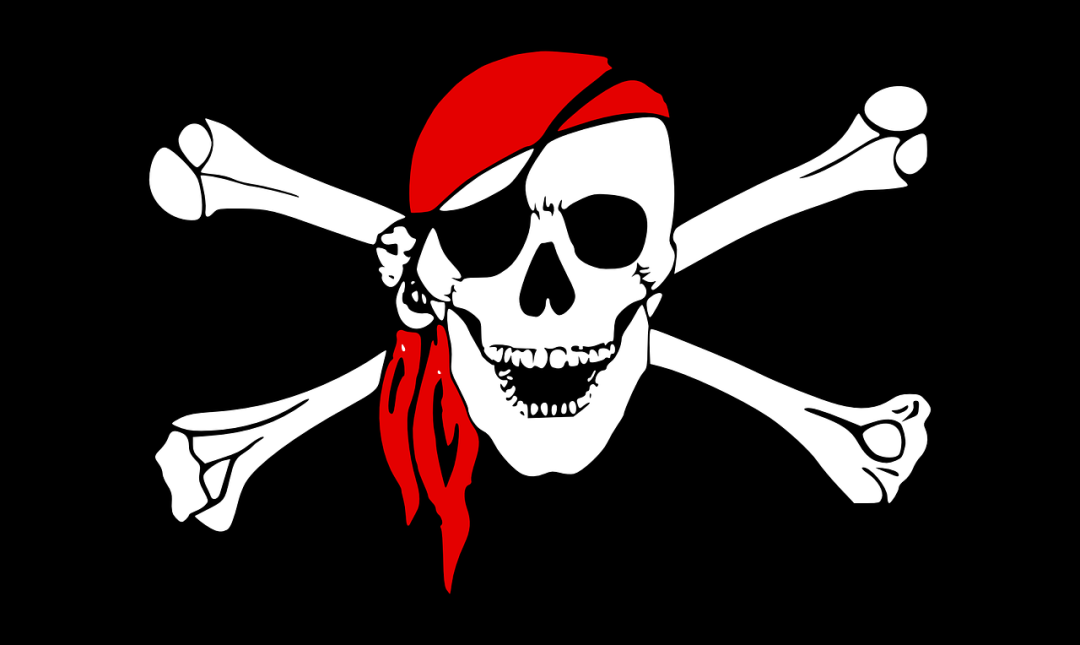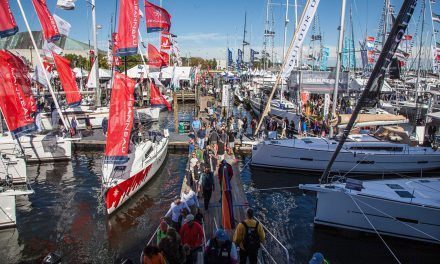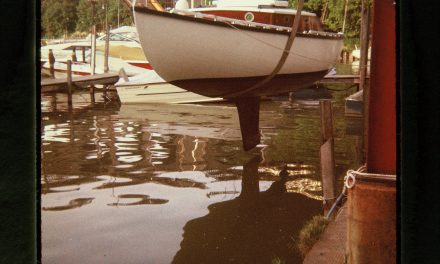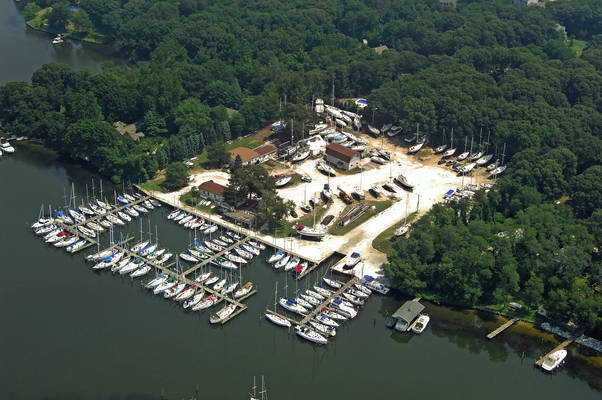Eye Patches for Night Vision?
I believe that the depiction of scurvy, salty, scalawags—buccaneers and privateers all, matey!—wearing eye patches is almost certainly a Hollywood trope, meme, or myth. I think that if a pirate could preserve night vision by covering one eye, wouldn’t that technique have trickled down to fishermen, merchantmen, and various navies? Wouldn’t a selection of stylish eye coverings in a variety of price ranges be found in every chandlery? Sailors on port call do talk about more than booty and rum and…parrots.
However, in defense of the idea that the patch has a night-vision-preserving function, the “MythBusters” cable TV show included this item in a pirate-themed episode. Following is a summary of episode 71. I recommend renting the episode, perhaps from Amazon, it’s quite entertaining!
Pirates wore eyepatches to preserve night vision in one eye. PLAUSIBLE
This myth works under the assumption that the eye covered with the eyepatch is already accustomed to low light conditions, while the other eye must take time to accustom. The MythBusters were sent into a dark room with light-accustomed eyes and were told to complete certain objectives. Their movements were hampered by the darkness and it took them five minutes to finish. When they went into a rearranged but equally dark room with an eye that was covered for thirty minutes, the MythBusters were able to complete the test in a fraction of the time. As a control test, the MythBusters then went back into the same exact room with light-accustomed eyes and ran into the same difficulty as the first test. The myth was deemed plausible because there is no recorded historical precedent for this myth.
Now the real question, not addressed by the MythBusters, is: Are pirates and ninjas truly mortal enemies? Aargh!
–Cory R. Carpenter, C22, Bright Eyes, somewhere just off the coast of Georgia
Helping Bahamians
We’re sad about what happened to the Abacos last month. It’s a tragedy and those wonderful people have a long recovery ahead, a recovery that will extend long after the news reports end.
I’ve done some research and found a charity that is doing good work there. It’s called All Hands and Hearts. They received a 94-percent rating from Charity Navigator, and all All Hands and Hearts donations earmarked for the Bahamas are being matched by Norwegian Cruise Lines. For more info: allhandsandhearts.org
Cover Kudos
The September Good Old Boat cover looks great! Thank you.
–Gino Del Guercio, s/v Andiamo
Carrying a Load
I need to haul out my 1975 29-foot Erickson to clean the bottom. I’ve read that her displacement is between 7,300 pounds and 8,500 pounds. My question is: what size trailer do I need (in terms of its rated load carrying capacity) to haul the boat a short distance uphill to a cleaning area at the yacht club?
–Jim Fish, Ladyfish, Lake Canyon Yacht Club, Canyon Lake, Texas
Hi Jim,
We don’t have a definitive answer, but our guess is that if the path is smooth, you could get away with using a trailer rated to carry much less. Keep in mind that it’s not just trailer ratings, but tire load ratings (from which a trailer rating may be derived?). Regardless, we suspect that any load capacity ratings are going to make allowances for high speeds, the increased loads created by bumps, and longevity. Hopefully a reader or two has better insight or experience.
If anyone has better advice information for Jim, contact him directly at: jfishcz@gvtc.com
—Editors
 Steering Cable Thoughts
Steering Cable Thoughts
We know that planes are different than boats, that they operate in different environments. But they both use wire rope cables for controlling a rudder and it seems, anecdotally, that the failure rate for steering cables in boats is much higher than in planes. Is the different environment the reason? Other causes? So we put it to the readers, and we put it to Edson, the maker of sailboat steering systems for many decades.
We’ll give Will Keene, Chairman of Edson International, the first word, and Adam Cove, CEO of Edson International, the second word, as they both have great information to offer… –Eds.
***
For the past 40+ years, the design and layout of steering systems for sailboats has been my principal occupation. Please consider the following regarding comparing steering systems and steering system failures on boats to those on planes.
- You don’t need a license or training to own and operate a sailboat and there are no regulated inspection protocols in place for sailboats, no FAA regulations.
- Sailboats can be built by anyone, literally, and many sailboat builders built boats in countries with very low labor rates, and accordingly low levels of knowledge of what a sailboat is and the environment in which it operates.
- The American Boat and Yacht Council (ABYC) has standards, good standards, for steering systems, but they are minimums. For example, in addressing the minimum bend radius of ¼-inch 7×19 wire rope, it is permitted to pass over a 4-inch sheave. But designing to minimums is not optimal and many builders do it out of necessity, of one form or another. Sheave size is often dictated by the need to accommodate a fuel tank or berth under the steering pedestal. And until the past decade or so, there was little incentive to follow any rules; CE rules and ABYC standards have changed that, to an extent, in a good way.
Edson recommends changing steering system cables and chain every 7-10 years (just like the common standing rigging recommendation), depending upon use and maintenance. Typically, chain used in steering systems is likely to fail before cable/wire rope and this failure is typically the result of zero maintenance (and when I say zero, I mean zero).
When I hear of a steering chain failure, I usually ask how the boat owner enjoyed their trip to the Caribbean, where the salt in the atmosphere attacks all things stainless. The broken chain always lacks any sign of oil or crevice corrosion protection. When I speak at cruising seminars, I suggest all sailors headed to the Caribbean oil steering chain and cable after every two bottles of rum. I always get some laughs, but my point is serious. Every sailboat I’ve inspected that’s spent a winter in the Caribbean shows signs of rust on all the stainless steel aboard. We see the results of maintenance being neglected.
Edson steering systems employ 305 stainless steel steering wire that is pre-stretched to 60% of breaking strength. We specify 3/16th inch wire on boats up to 38-40 feet. Above 40 feet we specify ¼-inch diameter wire. This wire never breaks simply because the loads exceed the wire strength. Steering cable failure happens as a result of misalignment (a maintenance issue) in which the wire is left to chafe on the edge of a quadrant groove or sheave groove, and then it breaks strand by strand.
Failure is also the product of lack of necessary wire tension (a maintenance issue). Steering cables stretch over time. If you move your steering wheel back and forth and there is play in the system, it’s time to look at cable tension. The rudder should always move when the wheel turns, without slop. Steering system cables should not be taut like they’re in a musical instrument, but they should not droop when the wheel is turned hard against the rudderstops. And tensioning adjustments must be equal; two turns on the tensioning nut on the portside must correspond to two turns on the starboard side tensioning nut. Tensioning just one side will simply move more chain to one side of the sprocket, allowing the “short” side of chain to travel over the sprocket, which will ultimately result in failure as wire does not like to run over the teeth on the sprocket.
Steering cables should be lightly oiled each time they are inspected (2-3 times per season, at a minimum). Apply 30-weight oil to a pad of white tissues and run it over the wire to coat; any meathooks will be flagged by pieces of white tissue and indicate it’s time to change the wire, immediately. And don’t waste time replacing just the one wire, replace the chain and all wire rope at the same time. And don’t stop there. While the patient is on the operating table, inspect the idler plate under the pedestal; if you see rust, replace the plate. Any engine and transmission control cables on the pedestal use steel jacketed cables and these should be replaced at least every 15 years.
We recommend U-bolts/wire clamps as they can be easily installed and they allow you to keep the old wires as spares if they are in good shape. (And remember, when using U-bolts, never saddle a dead horse. The saddle of a U-bolt must be on the working end of the wire.)
Maintenance and attention are key, even for a properly designed/built system. Following are three extreme examples of how successful a well-designed system, properly maintained, can be:
- Pelagic is Skip Novak’s extreme-latitude 50-foot sailing vessel. His (Edson) pedestal steering system is in for replacement after an estimated 500,000+ miles.
- The BT Global Challenge fleet of 60-foot vessels (sailing around the world the “wrong” way) collectively completed over 2,000,000 miles without a steering system incident of failure.
- Mike Plant’s first Vendee Globe sailboat, a 50-foot Roger Martin design, sailed the non-stop around-the-world race four times without replacing the steering system wire.
There is a story behind every failure and every success, and the words “proper design,” “inspection,” “maintenance,” and “neglect” come up in each story, just in different contexts.
I invite everyone to visit edsonmarine.com and look at the Product Support page. There we have Steering Inspection Checklists, Maintenance Guides, and Steering Data Sheets for many different boats. And if you don’t find information for your specific boat, please call as we can perhaps provide you specs or drawings for your boat’s system. Additionally, our EdsonMarine YouTube channel features dozens of videos, many of which cover steering systems.
Outside of work, I’m a guy who loves to buy and fix up old sailboats. After thru-hulls and hull integrity, I always tackle steering systems. I wouldn’t drive my car if I had any concerns about steering, and I apply the same logic to my boats.
If any The Dogwatch (or Good Old Boat) readers have any questions about sailboat steering systems, please call us. When you do, you very well might get me on the line. Edson values good old-fashioned customer service. In fact, if any readers need to reach me during non-business hours, please feel free to call me on my cell 24/7/365 at 508-353-5829. That is my way of saying “Thank You” for a wonderful 40-year career as steward of a 160-year-old company with a wonderful history and great customers.
–Will Keene, Chairman, Edson Intl.
Before I graduated from Michigan’s Naval Architecture and Marine Engineering program, I studied Aerospace Engineering at Embry-Riddle. While aero isn’t my area of expertise, I can count on a ready pool of friendly pilots (commercial and recreational) and aero engineers to offer expertise.
Failures do happen on small aircraft, and they are due to the same cause as most failures on boats: lack of a proper inspection and a disregard for recommended replacement intervals. You could go dig through some FAA reports to see these, or check out any number of forums online, like this one.
I suggest ignoring the cases of the planes/boats that have been flying/sailing for 40 years without an issue. While steering systems can last that long, the odds of failure increase dramatically with time. Replacement intervals are meant to keep the operator safe from what is not feasible to inspect. With steering systems out of sight, they are often neglected and rarely inspected.
Every Edson system failure I have seen could have been prevented by proper installation, inspection, and replacement of equipment, with the exception of catastrophic situations like hard groundings and high-impact collisions. We produce equipment for one of the worst environments on the planet. Corrosion and fatigue are constant adversaries. Inspect systems and respect replacement schedules to win that battle. We also see improper installations. Boats are not regulated to the same degree as aircraft. Despite our specs and recommendations, we see poor installations on a regular basis (from the factory and modifications made down the road by others). Anyone is capable of buying our equipment and installing any way they want, without any inspection required by any governing body.
I love going into design details and speaking about our products. I would be glad to go into more details about specific failure cases, components, connections, and general theory, if anyone wishes to reach out: adam@edsonintl.com.
We are available any time to assist. Our team is here to keep you safe on the water. We are dedicated to creating the best equipment and welcome your feedback. Steering has come a long way in our 160-year history, and we are excited to continue to push it forward with advances in materials and processes.
–Adam Cove, CEO, Edson Intl.
As a pilot for 50 years (I once flew my two-place 65-horsepower 1946 Taylorcraft from Richmond, Virginia, to Tampico, Mexico), I can tell you that airplane cables, as well as most other parts, are built to a very high standard. You cannot just get out and walk if something breaks. I have also been a boater for over 70 years.
–Wm. H. “Bill” Hummel, Wilmington, North Carolina
Airplanes don’t typically live in salt water.
–Joe Klerekoper
I am proactive and check the cables every once in a while when in the bilge (often). I found a meat hook (on one side, around the quadrant) and replaced the cable.
–Dana Mace, Capricious, C&C 27, Marblehead, Massachusetts
Comparing light planes’ steering cables and boats’ steering cables is like comparing apples and oranges. They don’t exist in the same environment, including humidity levels, heat, and salt air exposure.
Having spent 10 years flying helicopters off the backs of frigates, I can tell you that old Navy helos (H-2s, H-3s, H-60s, for instance) didn’t last 40+ years operating in salt fog environments without way more than annual inspections. While at sea, we aircrew had to do a weekly stem-to-stern inspection to find corrosion opportunities, and to turn over every paint nick and corrosion sighting to the metalsmiths for action. Ashore, not so much, just bi-weekly corrosion inspections and freshwater washdowns any time we operated over water.
I’d suggest selecting more corrosion-resistant control cables, along with frequent careful inspections for wear, tear and corrosion, and scheduled replacement after exceeding manufacturers’ or experts’ service life recommendations, all would serve to prevent almost all failures.
Probably preaching to the choir, but hope this helps!
–Dave Lincoln
I have little to add as the cable in my 1976 Ranger 33, which is probably original, still appears ok, but I don’t know how to do a full inspection. The boat has been on freshwater its whole life. But I think comparing boat cables to plane cables is an excellent idea and I agree that the marine failure rate is too high. If the cause is cables that are under-specified, that would be a shame because I would think we could double or triple their diameter with only a increase in cost of less than $100.
–Damon, Stray Cats
Hi Damon, It sounds like the Edson site and YouTube channel are worth checking out for information about inspections. And it sounds like if you have any questions, both Will and Adam have made themselves available to give quick, reliable answers. We hope that helps. –Eds.
It is not just cable failure. I constantly hear (and read) of steering system failures on sailboats. I’ve heard and seen rack-and-pinion failing, hydraulic failing, self-steering wind vanes failing, gudgeon failing, electronic self-steering failing, single- and double-cable and chain system failures, tillers failing. Rudders themselves fall off or snap off. I’ve had some happen to me. When I teach sailing, I eventually get to teaching sailing without the rudder, and I think that is common practice. Because we all know that, if people sail much, they’ll eventually have to use that skill.
Obviously, none of these systems is designed to have the full unbuoyed weight of the boat fall against them. But that happens. Most are not designed to perform forever without maintenance. But that happens. Most are not designed to survive hull failure or flexure. But that happens. All are designed to survive very bad conditions, and without much regard to weight or cost. Well, even less regard for cost when weight is considered. That’s sailboats.
They appear to be designed as though lives depend upon them. And yet they each have been seen to fail at every point. Again, that’s sailboats.
I, too, don’t see why.
I would love to see a book, or a blog, detailing hundreds or thousands of sailboat steering failures. Especially if it was able to include, say, Edson’s and Lewmar’s vast knowledge of the subject.
–Isaiah Laderman
I broke a 25-year-old cable on a Tartan 40, but it took backing the rudder into something very hard on the bottom. That puts a very big turning force on the steering.
–James Doran
From my experience, nothing made of metal and exposed to saltwater or salt air has a long life aboard. As a retired airline and corporate pilot, I agree that the constant inspection of aircraft pieces and parts is also a factor.
–Joseph Haley
We have an ancient Morgan OI 41 that is steered by a cable system. I have no idea how old the cables are, but in the past 14 years we have owned the boat, we have had zero issues with the system. When we bought the boat, I inspected the cables by disconnecting them at the quadrant and pulling them back to the pedestal. (Of course, I had a small line attached so I could pull them back to the quadrant.) I did not find any meat hooks or rusted sections, so I reinstalled them. I suspect improper cable clamping or using the wrong cable are the main contributors to most cable failures. I have seen a lot of pulley failures, either the pulley rusted or the mounting pulled out. Use only high-grade aircraft control cable that is flexible. It can’t hurt to up-size the cable if your pulleys will handle it. Use saddle clamps instead of swages, it makes adjustment and repairs at sea much easier. Remember to have a length of cable and clamps on board to make repairs if something does break.
–John and Naomi Howard, Horizon, 1973 Morgan OI 41, Kadena Marina, Okinawa, Japan
I’ve owned my Catalina 30 (with Edson steering) for 32 years and have never replaced the steering cables. I occasionally spread winch grease on the cables and check for broken strands, but they still seem OK. But I’m nervous because I’ve had them so long and have considered replacing them anyway. Probably would do so if it were easier, not sure that “If it ain’t broke, don’t fix it” applies here because broken steering can be disastrous. It will be interesting to read what Edson has to say.
–Stan Galper
Hi Stan, we were impressed with the comprehensive answers we got from Edson and the invitations to readers to ask more questions of them. Sounds like it’s time to replace your cable and chain and look at your plate and it sounds like Edson is prepared to help you in any way. Best wishes. –Eds.






